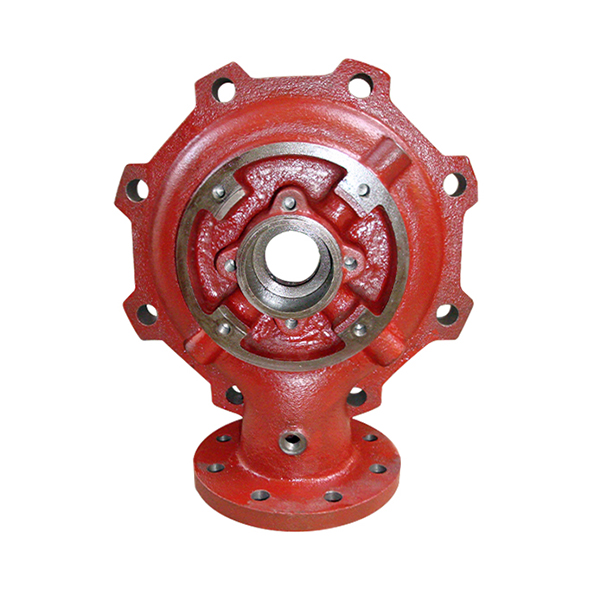Mobile:+86-311-808-126-83
Email:info@ydcastings.com
backward curved impeller
Understanding Backward Curved Impellers Design, Function, and Applications
Backward curved impellers are critical components in many HVAC (Heating, Ventilation, and Air Conditioning) and industrial applications. Their unique design and functionality provide benefits in efficiency, flow control, and noise reduction. This article explores the intricacies of backward curved impellers, examining their design principles, operational characteristics, advantages, and typical applications.
Design Principles
A backward curved impeller features blades that are curved in the opposite direction to the rotational motion of the impeller itself. Unlike forward curved impellers, which direct air or gas in the same direction as the impeller’s rotation, backward curved designs create a more controlled flow pattern. The curvature of the blades facilitates a smooth transition of airflow, minimizing turbulence and reducing losses associated with flow separation.
The construction of these impellers often involves materials such as aluminum, stainless steel, or thermoplastics, depending on the application. The choice of material significantly affects the impeller's durability, resistance to corrosion, and overall performance in various environments.
Operational Characteristics
When operating a backward curved impeller, several key performance characteristics come into play
1. Higher Efficiency Backward curved blades allow for better energy conversion from the motor to the air stream, resulting in lower energy consumption. This efficiency makes them an excellent choice for applications requiring continuous operation.
2. Pressure Build-Up Due to their design, backward curved impellers are particularly effective at generating high static pressure. This capability is essential in applications like exhaust systems and air handlers, where overcoming resistance in ducts is critical.
3. Reduced Noise The smooth airflow produced by these impellers contributes to lower noise levels. The design minimizes turbulence and vibration, making backward curved impellers a popular choice in noise-sensitive environments.
4. Variable Flow Control The inherent ability to handle variations in flow and pressure makes backward curved impellers versatile for different operational conditions. They perform well over a wide range of flow rates while maintaining stability and efficiency.
Advantages of Backward Curved Impellers
The implementation of backward curved impellers in systems offers several significant advantages
backward curved impeller

- Longevity The materials used and the aerodynamic efficiency often result in less wear and tear, extending the lifespan of the impeller and the system as a whole.
- Energy Savings The high efficiency and low power requirements contribute to substantial energy savings, reducing operational costs over time.
- Improved Performance in High Resistance Situations Their design allows for effective airflow in systems with higher resistance, such as long duct systems or where multiple turns are involved.
- Adaptability Backward curved impellers can be adapted for various applications, including fan systems, blowers, and industrial processes, making them a valuable solution across multiple industries.
Applications in Various Industries
Backward curved impellers are extensively utilized across multiple sectors due to their robust performance characteristics. Some common applications include
1. HVAC Systems In heating and cooling systems, these impellers are used to promote effective airflow throughout buildings, ensuring optimal temperature control and air quality.
2. Industrial Fans and Blowers They are widely employed in industrial settings for ventilation, cooling, and material handling processes.
3. Dust and Fume Extraction In environments where air quality is paramount, backward curved impellers efficiently remove airborne contaminants, enhancing occupational safety.
4. Respiratory Devices In healthcare, these impellers are found in ventilators and nebulizers, where reliable airflow is crucial for patient care.
5. Process Industries Chemicals, food processing, and pharmaceutical industries use backward curved impellers to manage the airflow and pressure in various manufacturing processes.
Conclusion
Backward curved impellers are an integral component in many air-moving technologies. With their efficient design, performance characteristics, and wide range of applications, they offer a reliable solution for businesses seeking to improve airflow efficiency and reduce operational costs. As industries continue to evolve, the importance of such innovative designs will only grow, driving further advancements in engineering and technology. Understanding their functionality and advantages allows engineers and designers to better incorporate these vital components into their systems.
-
Impeller Technology That Powers Precision in Pump SystemsNewsMay.22,2025
-
Valve Durability Begins with Quality Cast Iron ComponentsNewsMay.22,2025
-
Performance Cooling with Advanced Automobile Water Pump SolutionsNewsMay.22,2025
-
How Motor Housing and Oil Pans Shape Engine PerformanceNewsMay.22,2025
-
How Metal Castings Drive Modern Manufacturing EfficiencyNewsMay.22,2025
-
Exploring the Engineering Behind Valve Body CastingsNewsMay.22,2025











